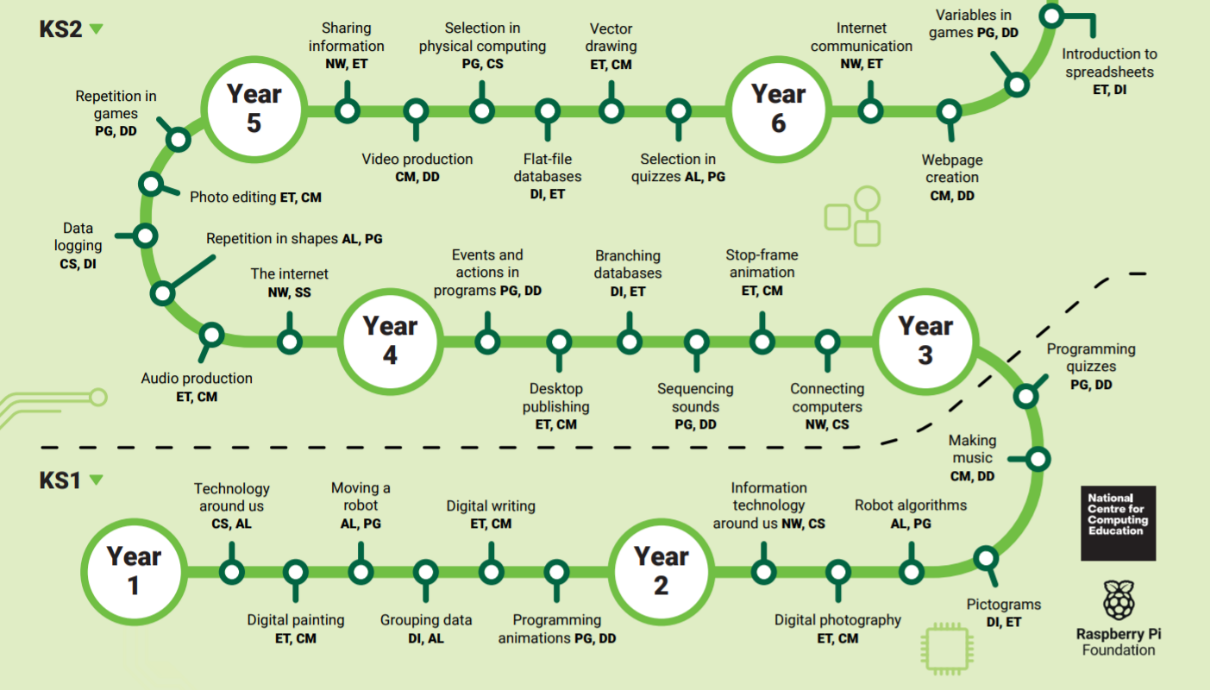Computing
The Computing Curriculum at Listerdale
Intent
At Listerdale Junior Academy we want children to be excited about computing. We recognise that computing supports and is a useful and necessary tool for children to have in the ever-changing world of technology, encouraging them to become digitally literate, which will then enhance their knowledge and support them being active participants in the digital world.
Implementation
To ensure a high standard of teaching and learning of a computing at Listerdale, we implement a curriculum that is progressive throughout Foundation, Key Stage 1 and Key Stage 2. At Listerdale, we use Teach Computing Curriculum to enhance our teaching of Computing. We aim to promote the use of computing and technology within different areas of the curriculum. We feel that embedding computing into the wider curriculum will allow children to be creative with their use of technology.
Within Foundation, our children are introduced to technology through continuous provision and small group tasks. They play with and discuss the purpose of different items such as telephones, cameras, stereos and tills through role-play and creative activities. They use laptops to research and answer questions, the interactive whiteboard to play online games and additional resources such as ‘Beebots’ to develop their communication, team work and problem-solving skills.
In Key Stages 1 and 2 computing is taught in blocks throughout the year. The key knowledge, skills and vocabulary included and introduced in each unit builds progressively across year groups and allows children to build on prior learning. All aspects of the National Curriculum are covered and the children have access to a wide variety of programmes and apps. They learn how to share information, log data, create spreadsheets, write algorithms, make animations, edit photographs and much more.

Where possible, cross-curricular lessons are planned. Computing has deep links with Mathematics, Science and Design and Technology and pupils are supported to make links between these subjects. Computers are also used in other areas, such as publishing in English lessons and researching in History or Geography.
We feel strongly about Online Safety at Listerdale and we want all children to feel confident when using all aspects of the internet. In a world where technology plays such a vital role in our everyday lives, we aim to ensure all children receive the most up-to-date knowledge to support them in making sensible, well thought-out choices when online. We want learners to discuss, reflect and appreciate the impact computing has on their learning, development and well-being. During Computing lessons, teachers emphasise the importance of respecting the academy rules and using the equipment carefully and online platforms safely.
Impact
The impact of our Computing curriculum is that children will make outstanding progress over time, relative to their individual starting points and their progression of skills. Children will leave Listerdale Junior Academy prepared for the next stage of their education and be able to navigate a world in which technology is everywhere.
Through well-planned lessons, visits and interactions with experts, our Computing curriculum will empower our children, so they understand they have the capability to change the world. This is evidenced in a range of ways including pupil voice, work produced and links with the community.
Online Safety
- At Listerdale Junior Academy we aim to prepare young people for the digital world that they are being immersed into every day. It is important that they are educated and given the tools that are needed for them to be more resilient online and allow them to become constructive and self-aware members of the online world.
- We deliver this through a robust computing curriculum that draws attention to online safety throughout their life at Listerdale Junior Academy
- To compliment the curriculum, we also have termly focus days and activities to raise awareness of Online Safety within school, Family Workshops to share knowledge and awareness with the families in our school community and a comprehensive monitoring system within the school which logs all the online activity in school and allows us to ensure the safety of children and staff.
- Finally, all staff complete a yearly training course focused on online safety and the dangers that the children may face, so that they can share their knowledge and experience.
Additional Information